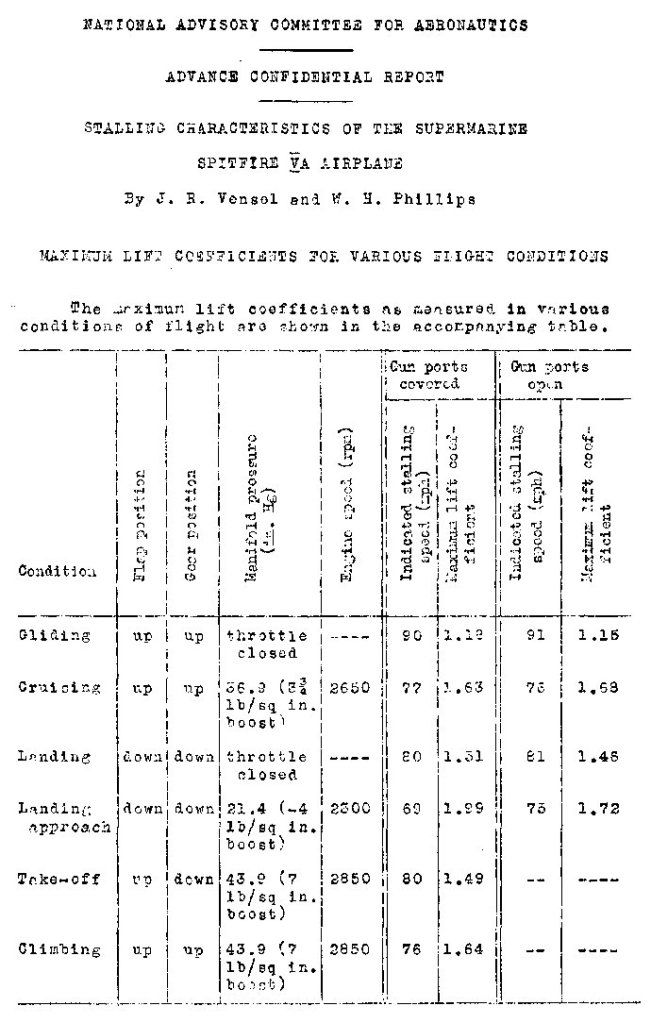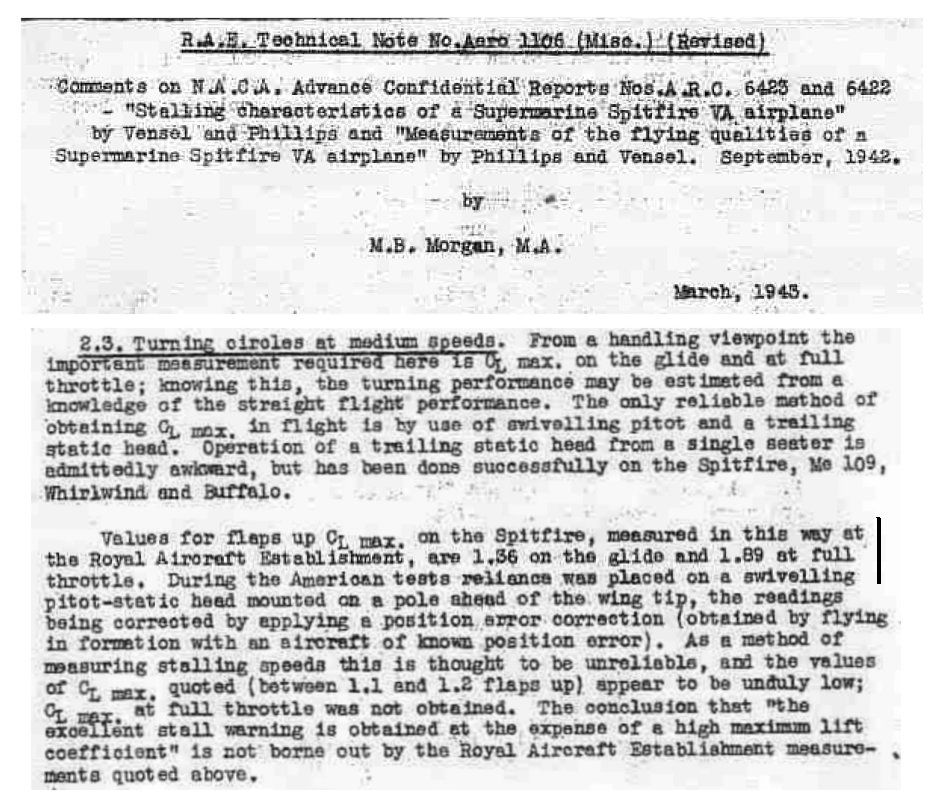
 |
|
#251
|
|||
|
|||
|
Quote:
|
|
#252
|
||||
|
||||
|
Quote:
Yep, one of the main flaws of Crumpps beloved maths, put garbage in and get more garbage back.
__________________
 Intel Q9550 @3.3ghz(OC), Asus rampage extreme MOBO, Nvidia GTX470 1.2Gb Vram, 8Gb DDR3 Ram, Win 7 64bit ultimate edition |
|
#253
|
|||
|
|||
|
Quote:
 Er the chart above also shows Sustained G for any given IAS....at pretty much any IAS the Spitfire can sustain somewhere around 0.5G more than the BF109 ..... (not hard to determine turn rate here either) The Blue RAE chart (from the same document) also shows sustained G, Turn times for 360 and also provides a means to determine Ps for bleeding turns ..... So we have turn radius, turn rate, sustained G (Ps=0) and a means to determine -Ve Ps values for energy bleed .... what more is there to turn performance ...... give us a break ! So far you have admitted to a weight error in your calculation. We know you made an error on the Spitfire power as well using 950/990BHP whilst RAE used 1050Hp at 12,500ft .... and we also know that a Merlin II power rating at Combat power was 1030hp at 16,500ft as detailed in the 2 seperate Inspection and test certificates.... shown earlier. And in Post 209 with respect Spitfire BHP you said "I suspect it was for an improved high altitude version".... when we know it wasn't and that RAE used standard Combat Power ratings. Last edited by IvanK; 09-20-2012 at 04:39 AM. |
|
#254
|
|||
|
|||
|
Are you saying that, because we don;t know the AoB, we cannot therefore assume that their rotational velocity is equivalent - because the air passing over the indicator would not be equally displaced with respect to each aircraft's flight path?
If so, then yes, you're right I suppose. Rotational velocity is dependant on more that simply airspeed and turn radius.. it needs "ground speed", essentially - which is the "real" speed around the spatial unit that is the turn. Can we make any assumptions about likely AoB? The graph indicates that the turn is level (horizontally in each case). Do we know what the AoB differential is likely to be for each aircraft in each case? (then we can work out the proportion of airspeed that is in the horizontal plane). Last edited by pstyle; 09-20-2012 at 12:03 AM. |
|
#255
|
|||
|
|||
|
Now lets look at this Clmax discussion which Crumpp claims the RAE cocked up. Lets look at some other peoples estimates for Spitfire Clmax values.
How about we start with NACA ... we will use that very same report Crumpp that you are so smitten with that you used in setting up the "Spitfire Dangerous Stability thread". Here is NACA's estimate on Clmax  So at Cruise power (3.75lbs boost 2650RPM) in clean configuration they come up with 1.68 (Recalling that the RAE plot is based on +6.25Lbs/3000RPM) Then lets look at the RAE document they wrote in response to the NACA report:  Interestingly the RAE methodolgy is slightly different to NACA's (Trailing versus Pole with swivel head) the RAE came up with Clmax on the glide (power off) of 1.36 and at max power of 1.89. The RAE Blue Turn plot uses a Clmax value under full power of 1.87 Of course we know the NACA report was based on a Spitfire MKVA so there will be some variance to the numbers of a Spitfire MKI but it does give some validation of the RAE determined Clmax under power values. The NACA Spitfire MKVA document was good enough for you Crumpp in the stability argument regarding the MKI so I assume its an acceptable reference in this discussion ? Last edited by IvanK; 09-20-2012 at 04:44 AM. |
|
#256
|
||||
|
||||
|
Quote:
Quote:
If you do the math, you will find the values for CLmax align with the NACA's!! Spitfire Mk I: Speeds Dynamic pressure CL 66 14.76610169 1.693067034  Once more, the RAE admits that operating a trailing static head is difficult as best. Do you know what you have to do? When installed, you have a tangle of tubes in the cockpit that the pilot must pinch off with an airtight seal on the correct lines at the right time. It is hard enough in cruise flight and would be extremely difficult to do accurately in a high performance fighter at the stall point. That is why they labeled the values as "assumed values of CLmax". 
__________________

Last edited by Crumpp; 09-20-2012 at 04:55 AM. |
|
#257
|
||||
|
||||
|
Quote:
See above. Glad you brought up all these points. You read my mind. . You can use the NACA's values for some things on the Spitfire Mk V. The airfoil is the same. Airfoil selection is what determines Coefficient of lift. If I would have posted it, some people would have just attacked it was from a different variant without understanding what is comparible and what is not.
__________________

|
|
#258
|
|||
|
|||
|
Let me guess here.
The 'math' (or 'maths' as it's referred to over here) according to Crummp, shows something adverse to the documented real life performance of the Supermarine Spitfire relative to the performance of the Bf109. There is a distinct pattern developing here. I find it surprising that a man who purports to concern himself with the performance of 'real aircraft', does not spend his time debating these issues on a more appropriate forum involving comparisons between 'real world' aircraft. Why would such an expert in his field waste his time on a forum geared to the analysis of a Battle of Britain based computer game? With most of his efforts geared toward the discrediting of the Supermarine Spitfire relative to the Messerschmidt Bf109? It's a mystery to me, but maybe a psychologist could write a thesis. |
|
#259
|
||||
|
||||
|
Quote:
 It is not documented real life performance..... It is calculated from a single data point with assumed values for CLmax. That single data point was measured from a trailing static head. What do you think the spreadsheet is??? Try the same the exact thing...calculated performance from data. I just have the advantage of being able to use Mtt data, Supermarine, and NACA data that did not exist in 1940.
__________________

Last edited by Crumpp; 09-20-2012 at 05:09 AM. |
|
#260
|
|||
|
|||
|
Quote:
Quote:
__________________
Il-2Bugtracker: Feature #200: Missing 100 octane subtypes of Bf 109E and Bf 110C http://www.il2bugtracker.com/issues/200 Il-2Bugtracker: Bug #415: Spitfire Mk I, Ia, and Mk II: Stability and Control http://www.il2bugtracker.com/issues/415 Kurfürst - Your resource site on Bf 109 performance! http://kurfurst.org 
|
 |
| Thread Tools | |
| Display Modes | |
|
|